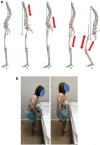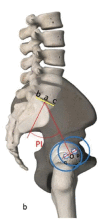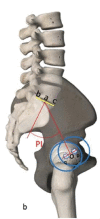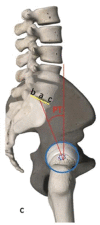Sagittal Alignment Concepts and Spinopelvic Parameters
- PMID: 36969787
- PMCID: PMC10038727
- DOI: 10.1055/s-0042-1742602
Sagittal Alignment Concepts and Spinopelvic Parameters
Abstract
Spinal surgery continues to expand its horizons to care for disabled patients presenting pain and deformities. Over the past decade, our knowledge of spinal alignment, from the skull to the pelvis, has increased considerably. Such knowledge must expand to reach general orthopedists and improve the care required for so many people. Global spinal alignment is a critical concept in understanding the impact of pathological conditions (degenerative diseases, traumas, deformities) and their treatment, including spinal instrumentation and arthrodesis. Therefore, the treatment of any spinal disease must include the knowledge of the complexity of the spinopelvic alignment. At first, all parameters seem like pure mathematics, hardly applicable to the everyday life of the inattentive reader. However, it gradually becomes clear that, like everything else in orthopedics, biomechanics is an essential part of the knowledge of the musculoskeletal system, revealing the logic behind the physiology of movements. The knowledge of the sagittal alignment concepts and spinopelvic parameteres provide a better comprehension of the axial and appendicular skeletons, increasing the understanding of the physiological and adaptive spinal processes in the face of the degenerative process that increases throughout life.
Keywords: sagittal alignment; spinal fusion; spine/surgery; spinopelvic parameters.
Sociedade Brasileira de Ortopedia e Traumatologia. This is an open access article published by Thieme under the terms of the Creative Commons Attribution-NonDerivative-NonCommercial License, permitting copying and reproduction so long as the original work is given appropriate credit. Contents may not be used for commecial purposes, or adapted, remixed, transformed or built upon. ( https://creativecommons.org/licenses/by-nc-nd/4.0/ ).
Conflict of interest statement
Conflito de Interesses Os autores declaram não haver conflito de interesses.
Figures




















References
-
- Schwab F, Lafage V, Patel A, Farcy J P. Considerações sobre o plano sagital e a pelve no paciente adulto. Spine (Phila Pa 1976) 2009;34(17):1828–1833. - PubMed
-
- Hardacker J W, Shuford R F, Capicotto P N, Pryor P W. Radiographic standing cervical segmental alignment in adult volunteers without neck symptoms. Spine (Phila Pa 1976) 1997;22(13):1472–1480. - PubMed
-
- Roussouly P, Gollogly S, Berthonnaud E, Dimnet J. Classification of the normal variation in the sagittal alignment of the human lumbar spine and pelvis in the standing position. Spine (Phila Pa 1976) 2005;30(03):346–353. - PubMed
-
- Bradford D S, Tay B K, Hu S S. Adult scoliosis: surgical indications, operative management, complications, and outcomes. Spine (Phila Pa 1976) 1999;24(24):2617–2629. - PubMed
LinkOut - more resources
Full Text Sources
Miscellaneous

